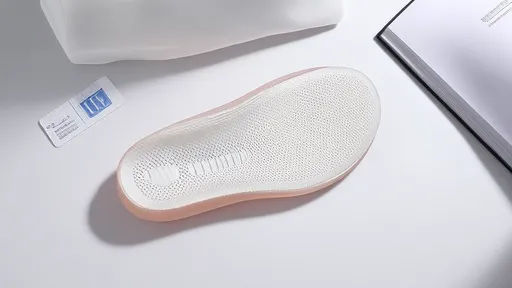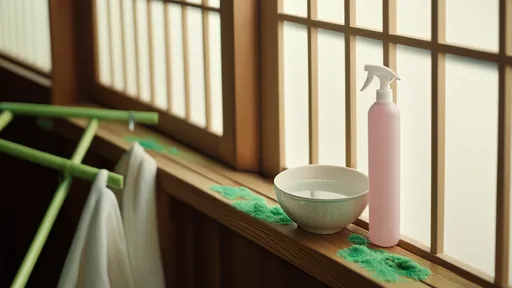The sound of laughter and splashing water fills the air as children and adults alike enjoy the refreshing embrace of a swimming pool on a hot summer day. Yet beneath the surface of this idyllic scene lurks a silent hazard that claims countless victims each year – the slippery pool deck. What begins as a carefree afternoon can quickly turn tragic when bare feet meet wet surfaces, sending unsuspecting swimmers crashing onto unforgiving concrete.
The physics behind poolside slips reveals why these accidents occur with such alarming frequency. When water meets the smooth surfaces typically used around pools – whether tile, concrete, or composite materials – it creates a perfect storm for loss of traction. The thin film of water acts as a lubricant between footwear (or bare skin) and the ground surface, reducing friction to dangerously low levels. This phenomenon becomes particularly problematic when oils from sunscreen mix with pool water, creating an even more slippery solution that clings to surfaces long after the visible water has evaporated.
Architects and pool designers have long grappled with the challenge of creating visually appealing yet safe pool environments. The traditional smooth, light-colored surfaces favored for their ability to reflect heat and create an attractive aquatic aesthetic unfortunately contribute to the slipping hazard. Modern solutions include textured materials that provide traction even when wet, specialized coatings that increase surface friction, and innovative drainage systems that prevent water accumulation. However, these safety measures often come at the cost of that pristine resort-like appearance many pool owners desire.
Hospital emergency rooms see a predictable surge in pool-related injuries during summer months. Fractured wrists from instinctive attempts to break falls, concussions from head impacts, and debilitating back injuries account for the majority of serious incidents. Perhaps most troubling are the near-drownings that occur when a slip at pool's edge sends an unconscious victim into the water. Lifeguards report that a significant percentage of their emergency responses begin with someone losing their footing on the deck rather than encountering trouble in the water itself.
The legal ramifications of poolside slips have created an entire subspecialty within personal injury law. Property owners face significant liability when proper safety measures aren't implemented, particularly at commercial pools and apartment complexes. Many jurisdictions now mandate specific slip-resistance standards for public pool decks, with regular inspections to ensure compliance. These regulations often reference technical measurements like the coefficient of friction, requiring surfaces to maintain sufficient traction even when wet.
Consumer safety organizations have developed various testing protocols to evaluate pool deck materials. The pendulum test, which measures how a weighted slider behaves on different surfaces, has become an industry standard. Other evaluations involve measuring the angle at which a test surface causes a weighted shoe to begin sliding – a more intuitive metric that corresponds to real-world conditions. These scientific approaches have helped separate genuinely safe materials from those that simply claim to be slip-resistant.
Prevention strategies for home pool owners don't require extensive renovations. Simple measures like installing textured mats in high-traffic areas, enforcing a "no running" rule, and maintaining proper drainage can dramatically reduce slip risks. Some homeowners have found success with anti-slip treatments that can be applied to existing surfaces, though experts caution that these require periodic reapplication to remain effective. Proper lighting also plays a crucial role, as many evening slips occur simply because swimmers don't see wet patches on the deck.
The psychology behind poolside slips reveals why even experienced swimmers fall victim. The relaxed, vacation-like atmosphere around pools lowers people's natural caution, while bare feet – the preferred footwear for swimming – provide minimal protection against slips. Children's high energy levels and tendency to run exacerbate the problem, as do the effects of alcohol consumption that frequently accompanies adult pool parties. This perfect storm of environmental and behavioral factors creates conditions ripe for accidents.
Innovative materials science may hold the key to solving the slippery pool deck dilemma once and for all. Researchers are developing "smart" surfaces that change texture when wet, becoming more grippy as moisture levels increase. Other experimental approaches involve microscopic surface patterning that channels water away while maintaining a smooth appearance. Some commercial pools have begun testing heated deck systems that accelerate evaporation, keeping surfaces drier between swim sessions. While these solutions remain cost-prohibitive for most residential applications, they point toward a future where poolside slips could become rare occurrences.
The economic impact of pool deck injuries extends far beyond medical bills. Insurance premiums for properties with swimming pools reflect the inherent risks, while businesses operating pools face potential lawsuits that can reach into the millions. Some municipalities have considered requiring special permits for residential pools specifically to address safety concerns, including slip hazards. These economic pressures continue driving innovation in pool design and materials as the industry seeks to balance safety, aesthetics, and affordability.
Cultural attitudes toward pool safety vary significantly across different regions. In some European countries, rough-textured pool decks have been standard for decades, prioritized over visual appeal. Australian regulations mandate strict slip-resistance standards developed through extensive government research. By contrast, many American pool owners continue favoring smooth surfaces despite the known risks, suggesting that education about the severity of slip hazards remains inadequate. This cultural divide highlights how perception and tradition can sometimes override safety considerations.
As swimming pools become increasingly sophisticated – with features like infinity edges, integrated spas, and elaborate water features – the challenge of maintaining safe walking surfaces grows more complex. Designers must now account for varying water flow patterns, splash zones from water features, and the interaction between different materials. The trend toward naturalistic pool designs incorporating rock formations and irregular shapes introduces new variables that can create unexpected slipping hazards if not properly engineered.
Climate change may unexpectedly influence pool deck safety in coming years. As temperatures rise in many regions, pool usage seasons extend later into the year, increasing overall exposure to slip hazards. More intense summer storms lead to rapid fluctuations in pool water levels and deck moisture. Some experts suggest that future pool designs may need to account for these environmental changes by incorporating more robust slip-prevention features as standard elements rather than optional safety measures.
The humble pool towel serves as an underappreciated line of defense against slips. Strategic placement of absorbent towels at pool exits can help dry feet before they contact the main deck surface. Some commercial pools have installed specialized foot-washing stations with textured surfaces and angled water jets to clean and dry feet simultaneously. These low-tech solutions demonstrate that effective slip prevention doesn't always require expensive renovations or high-tech materials.
Looking ahead, the pool industry faces both challenges and opportunities in addressing its slipping epidemic. Consumer demand for safer pools continues growing, particularly among families with young children and aging baby boomers concerned about fall risks. Manufacturers who can develop attractive, durable surfaces that genuinely prevent slips stand to gain significant market share. Perhaps more importantly, the thousands of emergency room visits each summer might finally begin declining as awareness grows and solutions improve – allowing the simple pleasure of a day at the pool to be enjoyed without that lurking fear of taking a painful spill.

By /Aug 15, 2025

By /Aug 15, 2025

By /Aug 15, 2025

By /Aug 15, 2025

By /Aug 15, 2025

By /Aug 15, 2025

By /Aug 15, 2025

By /Aug 15, 2025

By /Aug 15, 2025

By /Aug 15, 2025

By /Aug 15, 2025

By /Aug 15, 2025

By /Aug 15, 2025

By /Aug 15, 2025

By /Aug 15, 2025

By /Aug 15, 2025

By /Aug 15, 2025

By /Aug 15, 2025

By /Aug 15, 2025

By /Aug 15, 2025